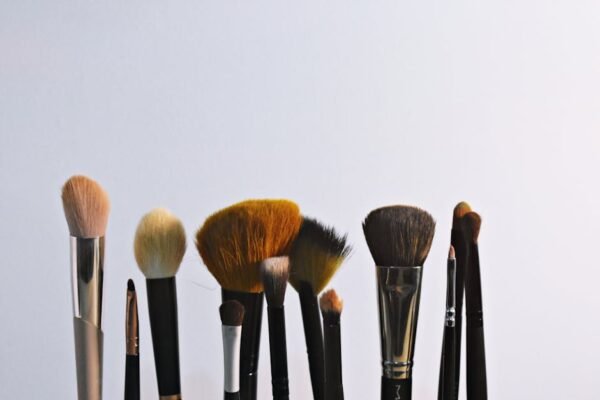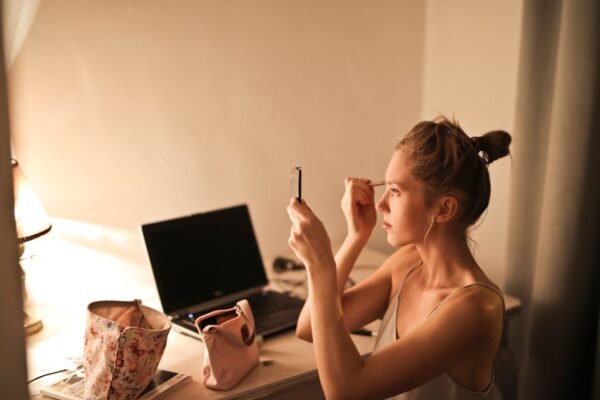Introduction to LED Light Therapy for Acne
{“type”:”img1″,”src”:”https://facehubs.com/wp-content/uploads/2024/03/fileUpload-52.jpg”,”alt”:”LED light skincare device on face”}At-home LED light therapy has gained traction as a popular skincare regimen for those battling acne. Utilizing specific wavelengths of light, these devices promise to alleviate acne, reduce inflammation, and promote healing. But how effective is this modern technology, and is it worth incorporating into your skincare routine? This comprehensive guide delves into the science behind LED light therapy, explores its benefits, and addresses common questions surrounding its efficacy for acne treatment.
LED, or Light Emitting Diode therapy, employs various light colors, each with distinct therapeutic benefits. Blue light is acclaimed for its antibacterial properties that target acne-causing bacteria, while red light is known to reduce inflammation and stimulate collagen production. Together, they offer a dual approach to not only treat current acne but also enhance overall skin health.
Despite its growing popularity, skepticism remains about the effectiveness of at-home devices compared to professional treatments. This article aims to provide evidence-based insights and practical advice for those considering LED light therapy as part of their acne management plan.
Understanding the mechanism of action is crucial for appreciating how LED light therapy works. The light emitted by these devices penetrates the skin to different depths, triggering biological processes that aid in skin repair and rejuvenation. The safety and non-invasive nature of this treatment make it an attractive option for many.
However, results can vary based on several factors including device quality, usage consistency, and individual skin conditions. It's important for users to maintain realistic expectations and consider LED therapy as part of a comprehensive skincare regimen rather than a standalone cure.
The Science Behind LED Light Therapy
At the core of LED light therapy is photobiomodulation, a process where light energy causes chemical changes within cells. For acne treatment, the focus is primarily on blue and red light due to their specific wavelengths that exhibit unique effects on the skin. Blue light, with wavelengths between 400-495 nm, possesses antibacterial properties that destroy acne-causing bacteria deep within the pores without harming the surrounding skin.
Red light, on the other hand, penetrates deeper into the skin's layers, where it enhances cellular activity. This promotes healing, reduces inflammation, and increases collagen production, which is essential for repairing acne scars and improving skin texture. The synergy between blue and red light therapy offers a comprehensive treatment that addresses both the cause and the aftermath of acne outbreaks.
Scientific studies have supported the efficacy of LED light therapy for acne, noting significant improvements in skin condition after consistent use. While the treatment does not provide immediate results, long-term usage has been shown to lead to a noticeable reduction in acne, diminished scarring, and overall healthier-looking skin.
For individuals considering at-home LED therapy, understanding the science behind the treatment can be empowering. It provides a foundation for realistic expectations and underscores the importance of consistency and patience in achieving desired outcomes.
When evaluating the effectiveness of LED light therapy, it's critical to distinguish between clinical-grade devices used by professionals and those designed for home use. While at-home devices are convenient and generally safe, they may not offer the same potency as their clinical counterparts. However, they still present a viable option for individuals looking to supplement their acne treatment regimen.
{“type”:”img1″,”src”:”https://facehubs.com/wp-content/uploads/2024/03/fileUpload-55.jpg”,”alt”:”person using LED face mask at home”}User Experiences with At-Home LED Light Therapy
Personal testimonials and reviews play a significant role in gauging the success of at-home LED light therapy devices. Users often report positive experiences, noting improvements in acne severity, skin texture, and overall complexion. However, it's important to recognize that individual results can vary widely based on skin type, the severity of acne, and the frequency of device use.
Consistency is key when it comes to LED therapy. Users who adhere to a regular treatment schedule are more likely to observe favorable outcomes. Additionally, complementing light therapy with a suitable skincare routine enhances the chances of success. This holistic approach addresses the multifaceted nature of acne, targeting both the external symptoms and underlying causes.
Negative reviews typically cite lack of significant improvement or dissatisfaction with the pace of results. These perspectives underscore the importance of managing expectations and acknowledging that LED light therapy is not a quick fix but rather a gradual process that requires time and patience.
Online forums and social media platforms offer a wealth of user testimonials that can provide valuable insights for those contemplating at-home LED light therapy. Engaging with these communities can offer support, advice, and firsthand accounts of experiences with various devices.
It's also beneficial to consult with a dermatologist or skincare professional before embarking on LED light therapy, especially for individuals with underlying skin conditions. Professional guidance can ensure that the treatment aligns with specific skin needs and is incorporated safely into an existing skincare regimen.
Choosing the Right At-Home LED Light Therapy Device
Selecting an appropriate at-home LED light therapy device is crucial for achieving optimal results. The market offers a wide range of options, from handheld units to full-face masks, each with varying features and price points. Key considerations include the device's light spectrum, intensity, FDA approval, and user reviews.
The light spectrum is a fundamental aspect, with devices offering blue, red, or a combination of both lights being the most effective for acne treatment. Intensity levels can also impact efficacy, as higher power devices may offer more potent treatment but also come with an increased risk of skin irritation for sensitive individuals.
While price is an important factor, investing in a higher-quality device from a reputable brand can ensure safety and effectiveness. Cheaper alternatives might not provide the desired results and could potentially harm the skin. User reviews and ratings are invaluable resources that can inform your decision-making process, highlighting the pros and cons of different models.
Finally, FDA approval or clearance is a significant indicator of a device's safety and efficacy. It's advisable to choose devices that have undergone rigorous testing and meet strict regulatory standards. Doing so can minimize risks and enhance the chances of a positive outcome with LED light therapy for acne.
In conclusion, at-home LED light therapy presents a promising option for individuals struggling with acne. Reflecting on the science, user experiences, and practical considerations can guide one's decision to incorporate this innovative treatment into their skin care regimen. With patience, consistency, and the right device, LED light therapy can be a valuable addition to acne management strategies.





